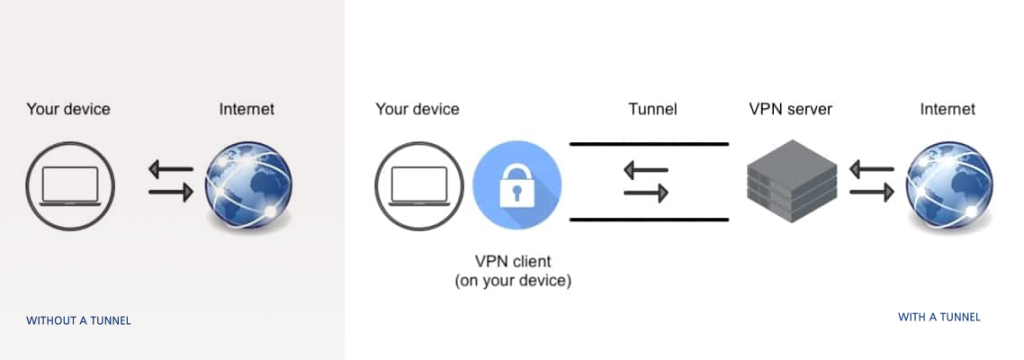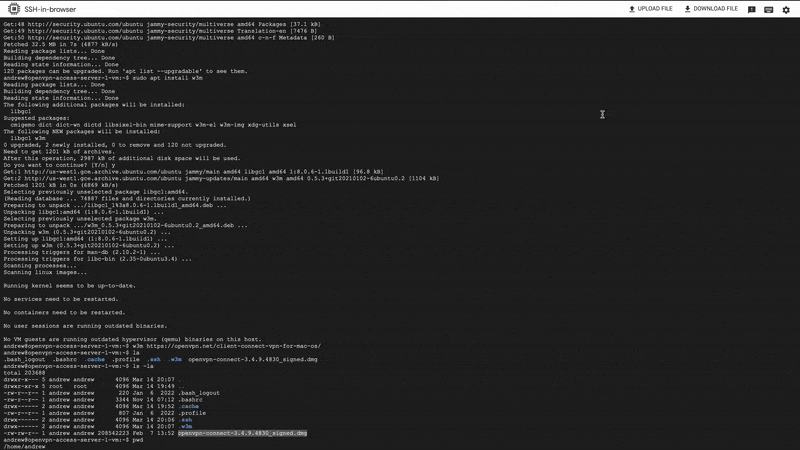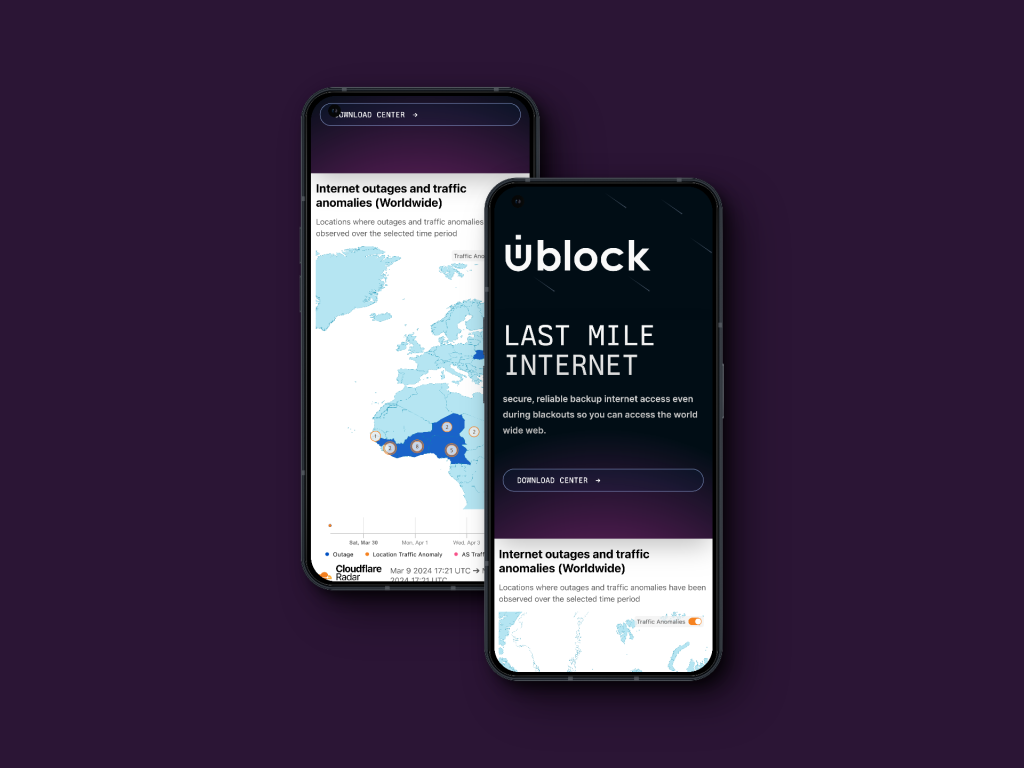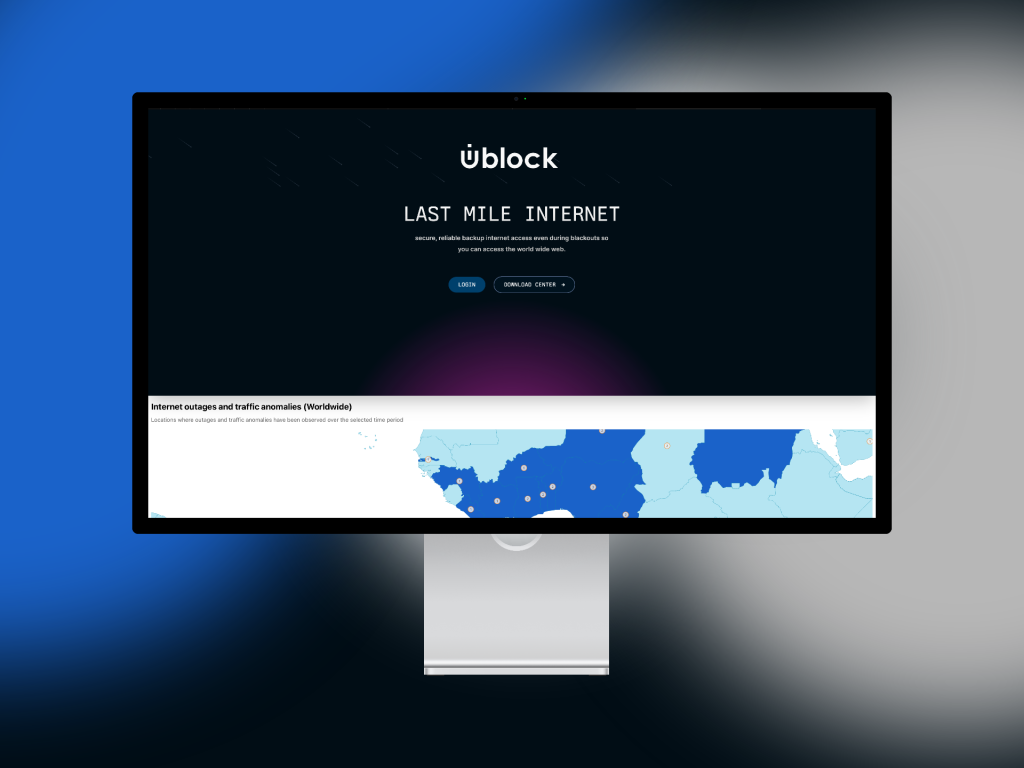I launched a new startup and shut it down in two weeks

I launched a new startup called Ublock pronounced “Unblock” that provided last mile internet service using private tunnels over a 2 weeks period. It grew to 33 customers specifically through word of mouth with Average Customer Value at $15 or ₵200.
The most interesting part of this experience is that I didn’t plan to start a new business, I found myself in a unique situation where a problem that I had solved for myself was worth something to my friends, colleagues, the person next to them and so on. However before I go into the details on how I created Ublock, I think it makes sense to go through the origins of the problem that created this opportunity in the first place.
Despair
On the fateful evening of March 14th, I found myself on a quest, one powered by the curiosity to uncover the intriguing world of Frames on Farcaster — a sufficiently decentralized social network similar to Twitter which has recently became popular within the blockchain space.
As I spent the night furiously consuming every bit of information I could find, the unexpected happened — at precisely 12:14 AM GMT, my internet connection went down. Initially, I waved it off as a routine network restart or an update from my internet service provider (ISP), and decided it was time to call it a night.
However, the situation quickly escalated when I realized that not only was my home broadband connection down, but my mobile internet had also ceased to function. It was then that the gravity of the situation dawned on me; we were experiencing a widespread internet blackout, and I had no way to verify the extent of the outage or what was causing it, as I could not access Twitter, the go-to source for real-time information on such events.
I reached out to my network of developers and colleagues from various co-working spaces, and the consensus was clear: the internet was down for most, if not all, users in the country. Surprisingly, only one essential internet messaging app — WhatsApp – seemed to be functioning through the outage.
Turns out, this was an West Africa-wide blackout, and the situation was really bad. It was now the morning of 15th March, and around 10 AM, I had a critical third-stage interview with the Investment Committee (I.C) for a venture I was working on. I also needed to present a deck during that call, and one of the I.C partners was supposed to join. Calling contacts in Nigeria, I learned they were experiencing the same issues. I was beginning to panic – there was no way I could attend the call or present the deck as planned. I had to resort to using that expensive dial-up number option in Google Meets, even with my best efforts, the call did not go as well as I had hoped without the ability to properly present or share screen.
Hope
After dealing with my initial frustration and pain, I knew I had to find a way out of this predicament. You see, I had no life outside of the internet – I never realized just how integral this little piece of technology was to my daily livelihood. But now, with the outage in full force, the realization hit me hard. No AI assistant, no streaming, no virtual meetings – the impact was staggering.
What made it even worse was the fact that I was in the middle of a crucial research phase, not deep into an established project where I had already downloaded and gathered all the necessary resources. This was a learning sprint, so the timing of the blackout couldn’t have been worse.
Just when I was about to give in to despair, a glimmer of hope emerged. Some of my contacts mentioned that by changing their DNS provider to 8.8.8.8, they were able to access Google services, despite the broader internet outage. This revelation sparked an idea in my mind — if I could access Google services, I could potentially tap into the Google Cloud platform and set up a remote desktop protocol (RDP) session, essentially creating a computer in the cloud that would be unaffected by the local internet disruption.
This was it for me!! If I could access Google services, it meant I could also access the Play Store and Google Cloud Console, and set up an RDP to create a virtual machine in the cloud. Without wasting time, I immediately checked the Cloud Marketplace and setup a ~$160/month Windows RDP server on Google Cloud. And just like that, I was back online with a computer that lived in the cloud 😂😂 — I now had access to Microsoft Edge which meant I could browse any website I wanted.
— Guess the first website I visited ??????

The bird app X(Formerly Twitter)!! I needed to know WTF was happening with our internet, and how people were dealing with it.
As I scrolled through the frantic updates, I encountered heartbreaking stories of the devastating impact this internet blackout was having on young professionals across Africa. Frida, a marketing consultant in Lagos, had missed a critical interview for a senior role she was in the second stage of due to the outage. Eddie, a remote software engineer on probation with a startup in Germany, had lost a $3,500 per month role because of his unreliable internet connection. Daniel, a UI/UX designer in Lagos, couldn’t even open Figma, his preferred design tool for work, causing him to miss a crucial deadline for a client project.
And then there was Janni, who had asked for a 2-week leave from work, hoping that the situation would clear up within that time, although she had originally planned to use that time to travel across East Africa.
These were just a few of the many stories that had emerged among the young, digitally-dependent workforce who relied on a stable power and internet connection to do their jobs. The gravity of the situation hit me hard as I read through the pleas and frustrations flooding the space.
Tunnels
Being part of a distributed remote organization, with our team spread across the continent, I knew we were facing a serious blocker that required a solution to enable our teammates to continue getting their work done.
While I had managed to set up an RDP on Google Cloud to handle my own critical tasks, I knew I needed to find a more affordable solution that I could share with my friends and colleagues to help them weather this crisis. It was at this time that I began exploring internet tunnels.

An internet tunnel is a secure, encrypted connection that allows data to be transmitted directly between endpoints, bypassing the public internet infrastructure. It creates a private, virtual pathway for communication, which is most cases enables a more private connection to the internet compared to standard internet traffic.
After countless trial-and-error attempts, I found myself grappling with a vexing catch-22, The problem — downloading the necessary client software binaries onto my personal computer. You see, if I didn’t already have those critical files on my hard drive, I had no way to download them, because as long as the files weren’t hosted on Google’s servers, I couldn’t access them without a functioning internet connection. It was a maddening predicament:
You need a certain file to configure internet access, but you need to download it first. However, in order to download it, you need the internet.
😝
However, I figured out two options that worked out just fine. using the scp protocol, I was able to exchange the required config zips and binaries from server to my local computer and after much experimentation with several tunneling software including OpenVPN 😔 — which I now officially detest, I finally figured out a working configuration with WireGuard — an opensource tunnel software.
For most people, these types of tunnels are often referred to as VPNs, as they operate in a similar fashion. In our case, WireGuard proved to be the most user-friendly option, with minimal complications once I got a client up and running.

With the WireGuard tunnel providing internet access through the available 8.8.8.8 DNS, our teammates were now able to reconnect to the internet. This was a good news, as it allowed us to overcome the debilitating effects of the blackout and ensure our distributed team could continue collaborating and getting work done.
I had created a resource download link to make on-boarding easier. I’d like to call this the Version one of our implementation as this was a simple resource center for friends and family.
Business
So how did I end up charging $15 per user?
I was minding my own business at the local coffee shop when Janni approached me with an unusual request. There was a customer outside, she explained, who was desperately in need of internet access and was essentially stranded due to her inability to access her accounts. Prior to this, I had only shared my internet connection with close friends, but this felt like one of those miraculous 😂 moments –– a chance to turn water into wine, as it were.
I walked up to the lady and jokingly told her that internet access would cost her. To my surprise, she said “no problem” without hesitation, that the only cash she had left was €10 (10 euros), would I accept that? I told her that I would accept her offering as a souvenir “😇”. The rest as you know is history, I performed an internet miracle, and instantly she was overjoyed, the first thing she did was call her friends, excitedly telling them to come get internet access. Playfully, I suggested she tell them it would cost 15 euros, since she had received a special discount.
Soon, those who had gained access to the internet tunnel began sharing the news with their own friends, the news begun spreading like wild fire. I found myself configuring internet access for an ever-growing circle of people, friends of friends of friends. “That thing they said about Word of mouth yeah” Such an amazing experience!
So instead of doing actual work, I spent the weekend streamlining configurations for each client I’d setup WireGuard on to enable internet access; it was also a pseudo-networking opportunity, as the individuals whose internet was critical to their work were also people I needed to know and meet for possible future opportunities. And with the complexity of managing several client configurations, I knew that there had to be a better way.
Whew! This screams ADVENTURE!! 😈

Adventure
To safeguard my personal information(phone number, whatsapp line etc), I knew I needed to streamline operations and prevent people from indiscriminately sharing my phone number on their social media status, touting me as the go-to guy for solving internet troubles. Before I knew it, a bustling “Big Business” venture was in the making.
Now, I must confess, this was all Janni’s idea since she took her leave prematurely she was bustling with energy about this “big business”, so I was like … why not??!!!! — regardless, I thoroughly enjoyed the challenge. As I set about creating a dedicated web presence for “ublock,” one of my top priorities was conversion. I needed people to commit the $15 fee upfront, before granting them access to my personal line. This meant the level of professionalism in executing the website was critical to my success.
I remember that while I was setting this up for my friends, I had told myself that the moment I had more than 10 configurations in bare text on my notes, I was going to streamline account management for every individual that was using a WireGuard client I’d configured.
So in no little than 48 hours, I had purchased a domain, bootstrapped up a website, and written a simple automation on top of a single database table. Here, I could add user accounts that were accessible via a web app, allowing each user, identified by their phone number, to easily access their personalized tunnel configuration file.
I even implemented an optional script for generating public/private key pairs, setting up firewalls and issuing static IPs for each client device, automating the process programmatically for each new user. Now, anyone without internet could simply visit the GCP-hosted site, download the necessary apps, and generate a tunnel configuration file to get their client up and running, with unrestricted internet access.




I was so hyped by the progress that I even designed a sleek logo for the venture. According to the news reports, this internet blackout could last up to 3 weeks, and while many couldn’t afford the luxury to purchase a Starlink device, they could certainly spare $15 to get reconnected to the digital world.
I knew fully well that this was a temporary problem, and the fix I had provided was only meant to be a stopgap solution. However, working on Ublock opened my eyes to the true state of problems plaguing the African continent. As much as I had always been skeptical of fintech apps, it became clear to me why we have sooo many of them.
This experience made me realize that some of the most successful startups on the continent are solving problems that simply don’t make sense outside of Africa. This is precisely why it’s so challenging for these homegrown ventures to raise funds from foreign direct investors or similar sources — until they can demonstrate tangible traction, revenue growth, or point to an already successful competitor who has secured a Series A round, they often struggle to be taken seriously.
Designing the Unblock platform was just the icing on the cake during this whirlwind journey. But more importantly, working on this project opened my eyes to the unique challenges and opportunities that exist for entrepreneurs building solutions tailored to the African market. It was a humbling reminder that some of the most impactful innovations can stem from addressing the most pressing local needs.
Embracing the Challenges
We truly have a dysfunctional system, which is precisely why we have so many enterprising entrepreneurs stepping up to the plate. The craziest part was that here I was, building internet solutions for people who I could barely even assure had stable connectivity in the first place. For the first time, I feel like I’ve truly walked a mile in their shoes. The reality in this climate is vastly different, and I’ve always tended to operate on the more sensible end of the spectrum.
But the epiphany that a very rudimentary hack/fix I had bundled together in just three days to solve a personal problem could serve as a lifeline for so many people who gained access to it, that epiphany sparked my problem-solving wandering brain cells.
Literally, the fact that simply providing Ublock, setting up the website to be hosted on Google Cloud so anyone could access it, download files, create an account, and set up a tunnel – meant that I was essentially saving lives. Assisting people like the individuals who rely on Jiji to sell their goods, the food vendors on Glovo, or even a stranded lady trying to extricate herself from a corporate scandal – that to me was easy-peasy. I was utterly motivated.
But there was so much to learn along the way, and for once, I had the chance to truly connect with people. We cried and laughed together, sharing in each other’s struggles. The most amazing part was seeing the look of sheer relief and joy on their faces when I would finally complete the Ublock configuration, and suddenly – boom! – they had internet access once more. Mission accomplished!
The overflow of heartfelt gratitude that hit me from all sides was almost overwhelming. My blushing, round cheeks did their best to hide the swelling sense of pride and satisfaction. Their infectious joy was palpable — if you can relate to this, then you know exactly what I’m talking about.
It was literal life saving joy and it might seem little and straightforward to me, but it wasn’t. This made me realize the power that we wield, being able to leverage technology in this manner means we truly get to make the world a better place. And it really has nothing to do with ground-breaking Zero Knowledge Decentralized distributed Micro services on a multi-cloud environment. No, it was the simple things that made people’s lives easier, that made them feel good, that ensured they could access food when hungry, and not have to worry about how they would move from point A to B without feeling completely stranded or secure an interview after applying to several jobs.
Lessons learned
Looking back, I’m immensely grateful for being able to provide a solution that truly made a difference in people’s lives. However, as time progressed, managing the servers became difficult and I began dealing with issues surrounding DNS/IP resolutions. Few of the GCP machines relied on Ephemeral IP that changed when restarted. I also explore other alternative options around Hardware routers pre-configured with a WireGuard Tunnel. I also realized that iPhone users could not load apps without the App Store, and the E.U policy on new Apple devices finally made sense. Bummer! This opened my eyes to a reality about iOS devices I never considered, to realize that your iPhone is just a dud the moment you cannot access the internet is actually terrifying, regardless there were some lessons I learned along this journey, a few of which I would like to share with you.
Move fast! Like really fast!!
Run if possible, 10x your sprint capacity, especially if your product is in the Hair on Fire PMF category, essentially you solve a problem your customers are actively wrestling with, and likely comparing existing products to solve it. To succeed in such a dynamic, you must rise above the noise. The image below explains the Hair on Fire PMF category quite well.

Local problems aren’t quite complex
Solving local problems doesn’t require massive tech. If anything, I’ve come to learn that they rather require massive infrastructure. The twist is, these infrastructure challenges have already been solved in more advanced regions. I could also be speaking from a place of high expertise when I call these problems simple. This is because, to create internet access is similar to how I engineer technology operations for Micro-services / Kubernetes cluster when I’m responsible for the DevOps within an engineering team.
I’ve had a profound realization through this journey – I’m no longer interested in building just “cool” products.
Along the way, I’ve had the privilege of crossing paths with remarkable individuals like Susan, the UX designer at Amazon; Fred, the journalist and reporter at a popular TV station; Danny, the airdrop hunter; and Lumi, the research director at a Pan-African organization. Each of these people has inspired me with their dedication to using technology to improve the world around them.
What’s most remarkable is that all of the growth I’ve experienced has been organic, driven by word of mouth. I’ve connected with friends of friends who work in PR, marketing, fintech, and a variety of other industries – all united in the pursuit of leveraging technology to create positive change.
Instead of super cool tech product, I’m committed to focusing my efforts on the boring, yet essential, technological challenges that have the power to truly make a difference in people’s lives. This is the path I’m now determined to walk.
Future States
If this internet blackout had continued for yet another week, there were a couple future states I was already exploring.
Although I didn’t get the opportunity to implement them, I’d prefer to make a mental note of them here as reference for future sakes in-case we ever find ourselves in the same situation again.
DNS Resolvers
The first scaling issue I faced was with Ephemeral IP Addresses, where restarted GCP instances changed their assigned IP address, which meant that client configurations that were IP Address specific stopped working immediately. And the only way to fix these issues were sending messages and screenshots over Whatsapp or calling them and trying to get them to change the address field in their Tunnel configuration. For future references, a note to self would be to reference these servers via DNS in place of Bare IP pointers, so that a change in a server’s IP can be effected at the DNS level without having to tamper with any client configurations
Custom Routers
The only reason I considered the router option was because the cafe I frequent asked me if there was a way they could also have the internet but across their devices so that their teams could process online orders through their systems, and customers who usually come here for internet won’t be disappointed. The internet blackout had already lasted for almost a week at this point. Had the outage persisted for much longer, I might have executed on the Router Strategy, although installing custom DD-WRT firmware would essentially void the device’s warranty. The general idea behind ublock was to provide a temporary, backup internet solution – something disposable that people can get rid of until stability returned, so I wasn’t overly concerned about the long-term implications.
Cheaper implementations
To be fair, I started from a $160 RDP setup to a $13 a month Server setup, and eventually found a solution that cut this cost by more than half. Although I didn’t get to explore it, I think it’s a worthy mention that Outline is a really great VPN Client software, plus their Developer SDK means you can build on top of their advanced networking layers to create applications for whatever purpose you require


